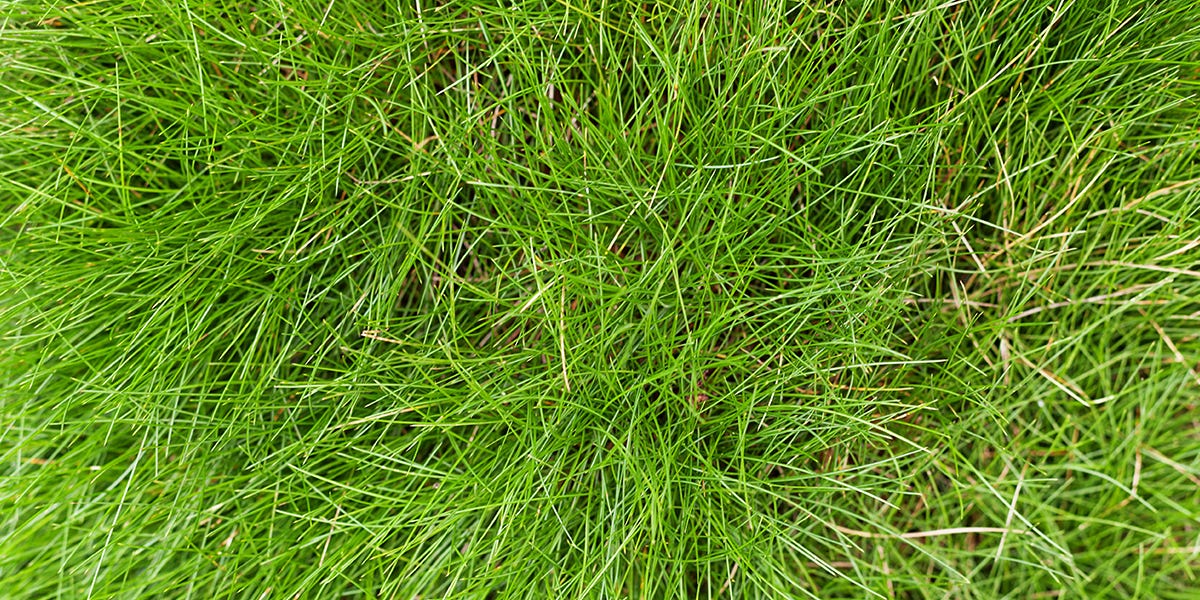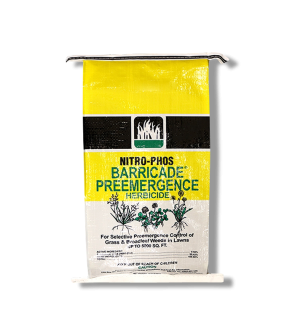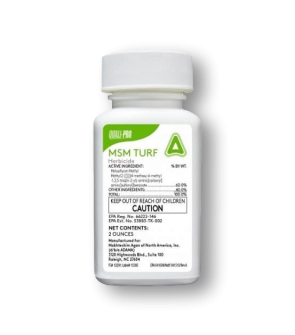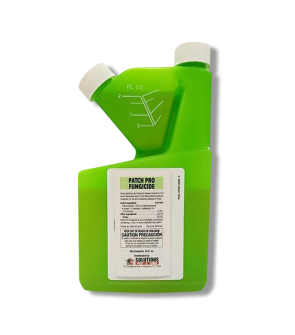Gain access to personalized product screening, the best pricing, rewards, and more!
Most Effective Products
Fescue Grass Control: How to Maintain Fescue Grass Yearly
This article is a general yearly maintenance program for Fescue Grass. Using the suggested products or methods can help you control your turf. Follow this guide and use the recommended products and methods, and we guarantee 100% improvement within your Fescue Grass.
Fescue Grass is a cool-seasoned turf found in most lawns in the middle and north of the United States, except for the southern half. As a cool-seasoned turf, it has a higher tolerance for the cold and grows well in cool-weather temperatures.
While there are different varieties of Fescue Grass, it can generally be grouped into two categories: fine or tall fescue. Each species will have a defined appearance, but can be typically recognized by its coarse light-to-dark-green blades and moderate bush-like coverage within lawns. All varieties of Fescue Grass will grow well in shaded areas due to its deep, extensive root system, which also enables it to resist drought and heat. Fescue Grasses deep root system, heat, and wear tolerance provide you with a green lawn all year long.
Compared to other cool-seasoned grasses, fescue grass's maintenance requirements are relatively low. As a bunch-gathering perennial grass, it will endure heavy foot traffic and compaction in the soil, making it a low-maintenance grass.
Our step-by-step DIY guide will show you exactly what you need to do throughout the year to maintain your Fescue Grass. Follow the recommendations and products suggested, and you can gain a better understanding of when and how to treat your Fescue Grass. If you have any questions, you can always call, email, or visit one of our stores, where our trained professionals would be glad to answer them.
Identification

Before beginning a treatment approach, you must correctly identify Fescue Grass by knowing what it looks like. Misidentification can lead you to use the wrong products, costing you time and money.
- Fescue grass can grow within the transition and northern part of the United States.
- It is a cool-season grass with tolerance to heat, drought, foot traffic, and shade.
- Fescue Grass has an extensive root system between 2 to 3 feet deep.
- Fescue Grass grows above ground in clumps and spreads through tillers- a vertical segmented stem that grows from the grass base. The tillers are segmented into their two-parted leaves.
- Fescue Grass prefers cold climates and shaded areas.
- Fescue Grass can grow in poor soil climates such as sand or clay.
Use the description above and the images to help you correctly identify Fescue Grass. If you are having trouble identifying it, send us a photo of your grass, and we will locate it for you.
Inspection

After you have confirmed that your grass is Fescue Grass, you can move forward with the inspection. In this phase, you must determine where the Fescue Grass is growing and the growing conditions. This will help you make cultural changes to your lawn and determine where to focus your applications.
When to Inspect
Fescue Grass is a persistent perennial foliage that can grow all year long in the middle and upper half of the United States. Typically, you will see an increase in population within the first half of the fall.
What to Look For
Fescue Grass will cover a large portion of your yard, including shaded areas underneath your trees or shrubs. Be on the lookout for its broad and sometimes tall leaves, which form a bunch covering in your yard. Some species of Fescue Grass will grow low to the ground, forming a creeping covering, or will grow high above the ground.
Treatment
Before starting any treatment, wear the appropriate personal protective equipment (PPE) to protect your eyes, mouth, face, hands, and feet.
It is best to begin in the early fall or spring if the temperatures are cool.
Step 1: Mow in March to September as Needed
Since Fescue Grass typically stays green all year, it will be hard to tell when it is out of dormancy. You should wait at least two weeks into your spring season to allow enough time for the grass to emerge from dormancy.
Try pulling on the Fescue Grass blades. If they are dormant, they will not easily pull out.
The ideal mowing height for Fescue Grass is between 2 to 3 inches. Mow when Fescue Grass exceeds 3 inches, typically you will mow every other 2 weeks. When it comes closer to summer, your grass will slow down in growth and will not need as much mowing.
Step 2: Water Your Lawn Throughout The Year
Frequent watering is not needed for Fescue Grass, but it will still benefit from an occasional deep watering of about 1 inch per week.
Areas containing sandy soil require at least 1.5 inches of water per week.
It is best to apply with a sprinkler early in the morning to give your Fescue Grass enough time to soak up the moisture. If applied in the middle or evening, be wary that this can make the grass susceptible to diseases.
Step 3: Apply Weed Control in April and October
In April and October, you will want to apply a pre-emergent herbicide.
Applying a pre-emergent herbicide during this time is more beneficial for your Fescue Grass because, during the cooler months, weeds will begin to germinate underneath the soil. It should only be used when weeds are not already present within your turf.
We recommended using Barricade Granular Pre-Emergent Herbicide due to its flexibility on various grass types and ability to prevent weeds from germinating.
For a general application, you will want to use 4 lbs. of product per 1,000 sq. ft. A 10 lb. bag of this product can treat up to 5,000 sq. ft.
Apply a post-emergent herbicide anytime when you see weeds in your lawn. Keep in mind you cannot apply a pre-emergent or post-emergent herbicide at the same time.
A recommended post-emergent herbicide we like to use is MSM Turf Herbicide which can eliminate many broadleaf and grassy weeds. Due to its being a selective herbicide, it will work to kill the target weeds without harming your fescue grass.
For a general application, you will put between 0.025 to 0.05 fl. oz. (1/2 to 1 gram) of MSM Turf Herbicide in a gallon of water per acre.
Step 4: Disease Control in June, July, or August
Keep an eye on your lawn from June to August for brown patches, fungi, and other visible diseases, as they are most commonly seen in Fescue Grass.
Treat as needed with our recommended Patch Pro Fungicide to remove numerous fungi and other diseases, such as mildew or blight, from your turf.
Patch Pro should be applied at a rate of 1 oz. of product per gallon of water per 1,000 sq. ft. For example, if you have a yard that is 2,500 sq. ft., then you would need to mix 1.5 to 10 fl. oz. of Patch Pro Fungicide in 2.5 gallons of water.
Step 5: Fertilize and Test Your Soil in September
Fescue Grass does not need much fertilization since it will pull on the nutrients far beneath the soil with its dense, deep roots.
If you must apply fertilizer, the best time is in September, when Fescue Grass is actively growing. Before applying fertilizer, it would be best to perform a soil test to determine if the turf's pH levels are at a minimum of 5.5 to 6.5 or if there are any diseases that may not be visible.
You will want to apply a fall fertilizer with a nitrogen level of at least 5%. For best results within your turf, use a granular fertilizer that releases nutrients slowly into your fescue grass. This will allow your turf a longer time frame to pull nutrients from to fight against weeds and fungi and promote new growth throughout the season.
Key Takeaways
How to Identify Fescue Grass
- Fescue Grass is an adaptable cool-seasoned grass that can tolerate heat, cold, shade, and drought. The main characteristic to look out for is the signature bunch or clump growth pattern. It will either grow high above the ground or be spread across the turf in wide coarse leaves.
How to Care For Your Fescue Grass
- Fescue Grass is a low-maintenance turf that requires little watering or fertilization. However, you must ensure a proper mowing, weeding, and disease control schedule throughout the year.
What is the Best Fertilizer for Fescue Grass?
- A fertilizer that contains at least 5% nitrogen with a slow-release formulation. It is best to perform a soil test to ensure the proper nutrient levels of your Fescue Grass are being met.














